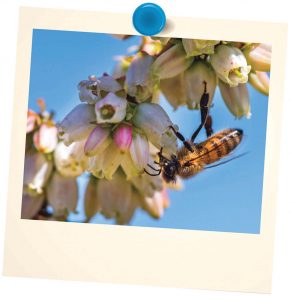Mapping busy bees
 University of Maine researchers have developed a tool called “BeeMapper” that will allow blueberry growers to assess the predicted wild bee abundance in the landscape surrounding their crop fields.
University of Maine researchers have developed a tool called “BeeMapper” that will allow blueberry growers to assess the predicted wild bee abundance in the landscape surrounding their crop fields.
“Having a better understanding of the predicted wild bee abundance in the landscape surrounding crop fields is important when making pollination management decisions,” says UMaine doctoral candidate Brianne Du Clos, who led the development of BeeMapper with funding from the university’s Senator George J. Mitchell Center for Sustainability Solutions.
For example, knowing the numbers and types of wild bees in the surrounding landscape will help growers budget how many honeybee hives to rent and help determine if they could take more action to enhance wild pollinator populations in their fields.
BeeMapper is part of a pollinator toolbox developed at UMaine that includes wild bee identification and monitoring tools, guidelines on installing pollinator plantings, and a budgetary tool to explore financial feasibility of pollination management decisions. Together, these tools will help growers attract more wild bees to their farms. BeeMapper is online: umaine.edu/beemapper.
